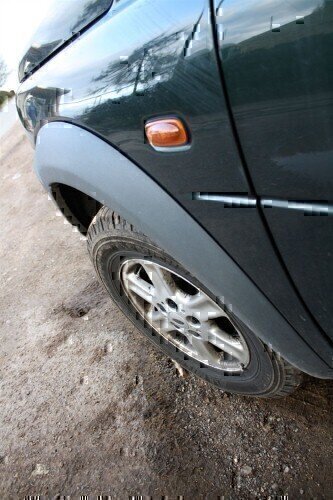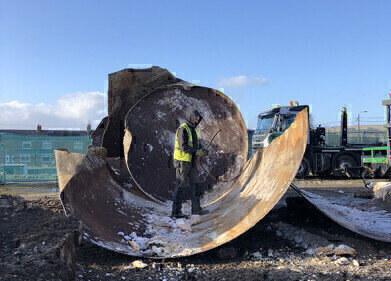Soil Remediation
EKOGRID remediates diesel polluted site in Ecuador
May 22 2018
Break in service pipeline polluted 2,800m2 of soil in Ecuador; combined in-situ electro kinetic oxidation and bioremediation solution remediated the polluted soil in just 10 months
Environment remediation specialists Eko Harden Technologies today announces that its groundbreaking EKOGRID electro kinetic oxidation technology has been successfully applied to clean an area of 2,800m2 of diesel polluted soil resulting from a break in an Ecuador service pipeline.
"Despite all the efforts to avoid accidents, spills do occur," says Erkki Lindberg, CTO of Eko Harden Technologies. "When it does, the importance is to remediate contaminated areas as efficiently as possiblewith greentech technology and not export the pollution to another area."
When the site owner identified the diesel spill, it immediately began a prospection project to evaluate the damage. The study showed a 2.800m2 affected area surrounding a leaked point on the pipeline. The Total Petroleum Hydrocarbon (TPH) concentrations in the soil and groundwater were 13.000 mg/kg and 1.370 mg/l respectively.
As the contaminated site was in a natural park where traditional cleaning methods such as mass-transfer could harm nature and the remediation target level was 1000 ppm, Eko Harden's EKOGRID electrokinetic oxidation in-situ remediation technology was selected by Lamor Corporation, the global environmental remediation company and prime contractor of the project. Remediation was done by in-situ combined technology: electrokinetic enhanced bioremediation.
The EKOGRID solution is a grid system of thin metal rod electrodes inserted into the soil driving controlled low voltage electric impulse in the contaminated soil and water volume. It triggers and amplifies the remediation capabilities of nature for a fast, cost-efficient and environmentally friendly cleaning effect. A groundwater pumping and nutrient addition system was also applied to enable the fastest growth of oil degrading microbes.
The application generated natural and massive mineralisation of the diesel contaminant in both groundwater and soil. The samples taken after ten months of operation showed 99% reduction of TPH concentration in soil. Groundwater samples were taken from piezometers installed at seven metres depth and results showed 99% elimination of contaminant in groundwater with TPH concentration of 15 mg/l.
"Remediating the affected area without any harmful side-effects on the natural park is another verification of the unique benefits of in-situ remediation technologies," adds Fred Larsen, CEO of Lamor Corporation. "It demonstrates the remarkable effectiveness of the combined bioremediation and EKOGRID in-situ solutions, which can now be used at other similar polluted sites where the traditional methods cannot be used."
Events
WEATHER • CLIMATE • WATER / EARTH OBSERVATIONS / GREEN ECONOMY
Oct 29 2024 St. Petersburg, Russia
Oct 30 2024 Hong Kong
Nov 05 2024 Toronto, Canada
Nov 06 2024 Ho Chi Minh City, Vietnam
Nov 12 2024 Valencia, Spain













